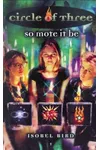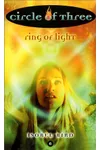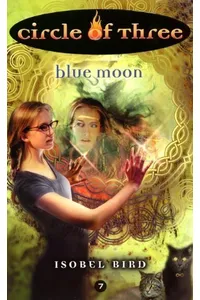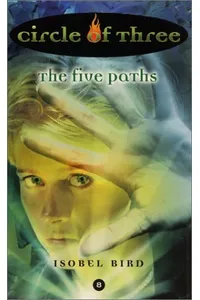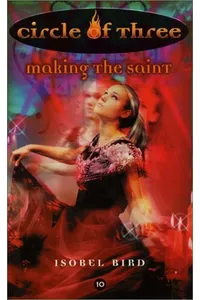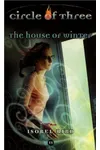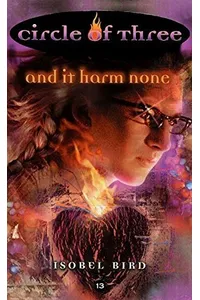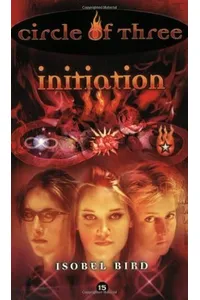Step into the enchanting world of Circle of Three, where teenage Wiccans weave magic and friendship amidst the chaos of high school life! Written by Michael Thomas Ford under the pen name Isobel Bird, this young adult series of fifteen novels, published between 2001 and 2002, follows three girls—Kate, Annie, and Cooper—as they explore Wicca, confront personal struggles, and discover their inner strength. With its heartfelt coming-of-age tales and respectful portrayal of Wiccan practices, Circle of Three remains a hidden gem for fans of fantasy and self-discovery.
Unlike the fantastical witchy worlds of other YA series, Circle of Three grounds its magic in real-world Wiccan traditions, offering readers a unique blend of mystical adventures and relatable teen drama. Whether you’re drawn to tales of friendship, spiritual growth, or the thrill of casting spells, this series invites you to join its magical circle.
How Circle of Three Began
Michael Thomas Ford, a seasoned author with a deep connection to paganism, crafted Circle of Three under the pseudonym Isobel Bird to capture the authentic experience of Wicca for young readers. Inspired by the surge of witchcraft-themed YA fiction in the late ’90s, Ford aimed to create a series that stood out by portraying Wicca realistically, avoiding the fantastical tropes of broomsticks and pointy hats. Published by HarperCollins, the series launched in 2001 with So Mote It Be, quickly gaining a loyal following for its blend of spirituality and teen angst.
Ford chose the pen name Isobel Bird to navigate the publishing landscape of the time, where openly gay authors faced challenges in the YA market. The name paid homage to his friend, author Isabelle Holland, and reflected the series’ mystical tone. His background in paganism ensured the rituals and themes resonated authentically, making Circle of Three a trailblazer in grounded Wiccan fiction.
The Heart of Circle of Three
The series kicks off with So Mote It Be, where Kate, a popular basketball player, stumbles upon a book of spells and casts a love spell with disastrous results. She teams up with Annie, a bookish intellectual, and Cooper, a rebellious outsider, to undo the chaos, sparking their journey into Wicca. In Merry Meet, the trio deepens their study at a local New Age store, Crones’ Circle, and welcomes a new character, Sasha, while facing the Vernal Equinox ritual. In the Dreaming, the fifth book, takes a fantastical turn as the girls encounter faerie magic during a Midsummer ritual, challenging their bonds and beliefs. By Initiation, the final novel, they complete their year-and-a-day Wiccan study, facing initiation into a coven.
Circle of Three shines through its exploration of themes like friendship, identity, and spiritual growth. Each girl grapples with personal conflicts—Kate balances popularity with her Wiccan path, Annie reconciles her rational mind with intuitive faith, and Cooper navigates the unpredictability of magic and close friendships. Set in a relatable high school world, the series weaves Wiccan rituals, Tarot, and sabbats like Samhain into its narrative, offering readers a window into pagan practices. Its light, engaging style and focus on emotional authenticity make it a standout in YA fantasy.
Why Circle of Three Resonates
Circle of Three carved a niche in the early 2000s YA boom of witchcraft fiction, standing out for its commitment to realistic Wiccan portrayals. Fans on platforms like Goodreads praise its nostalgic charm and relatable characters, with many revisiting the series for its blend of magic and teen drama. While it never reached the fame of Harry Potter or Sweep, its respectful depiction of Wicca inspired readers exploring spirituality or seeking stories of self-discovery.
The series’ legacy lies in its empowering message: embrace your unique path, even when it challenges societal norms. Its out-of-print status only adds to its cult appeal, with used copies and eBooks still cherished by fans. Circle of Three remains a testament to the power of friendship and the magic within us all.
- Publication Years: 2001–2002
- Number of Books: 15
- Author: Michael Thomas Ford (as Isobel Bird)
- Genre: Young Adult Fantasy
Ready to cast a spell on your reading list? Grab So Mote It Be and dive into Circle of Three’s magical world of Wicca and friendship!
